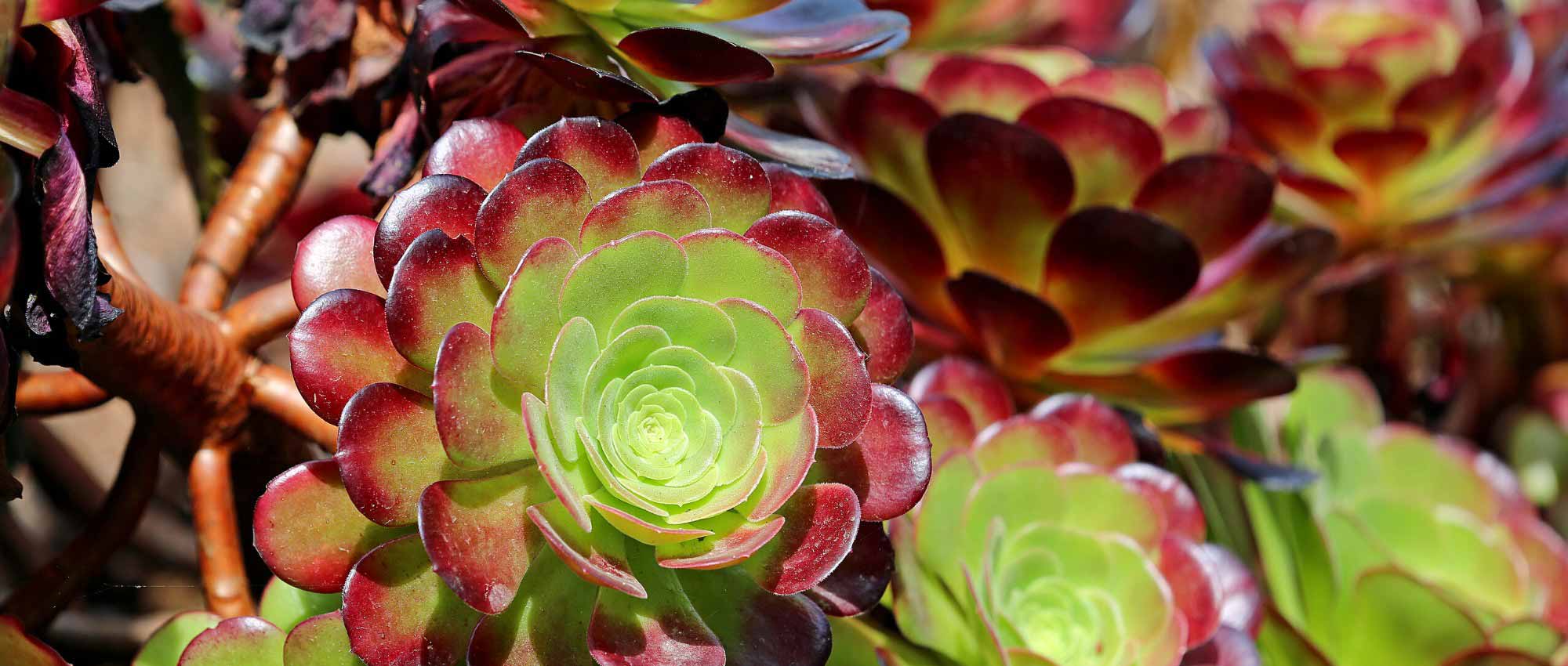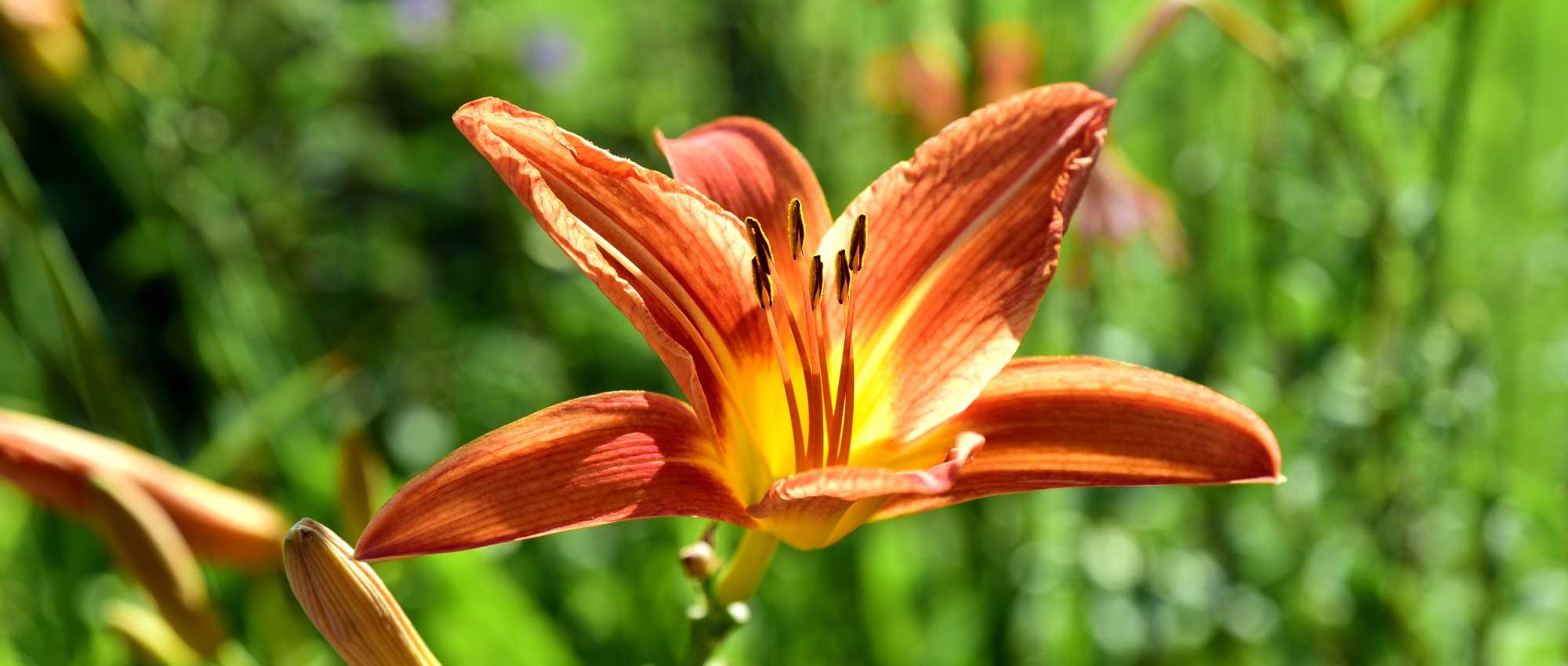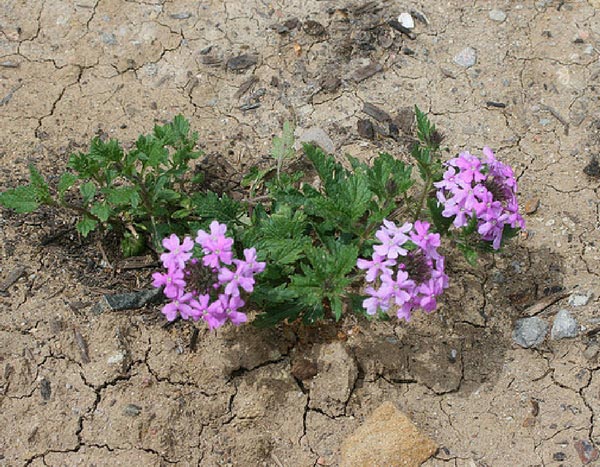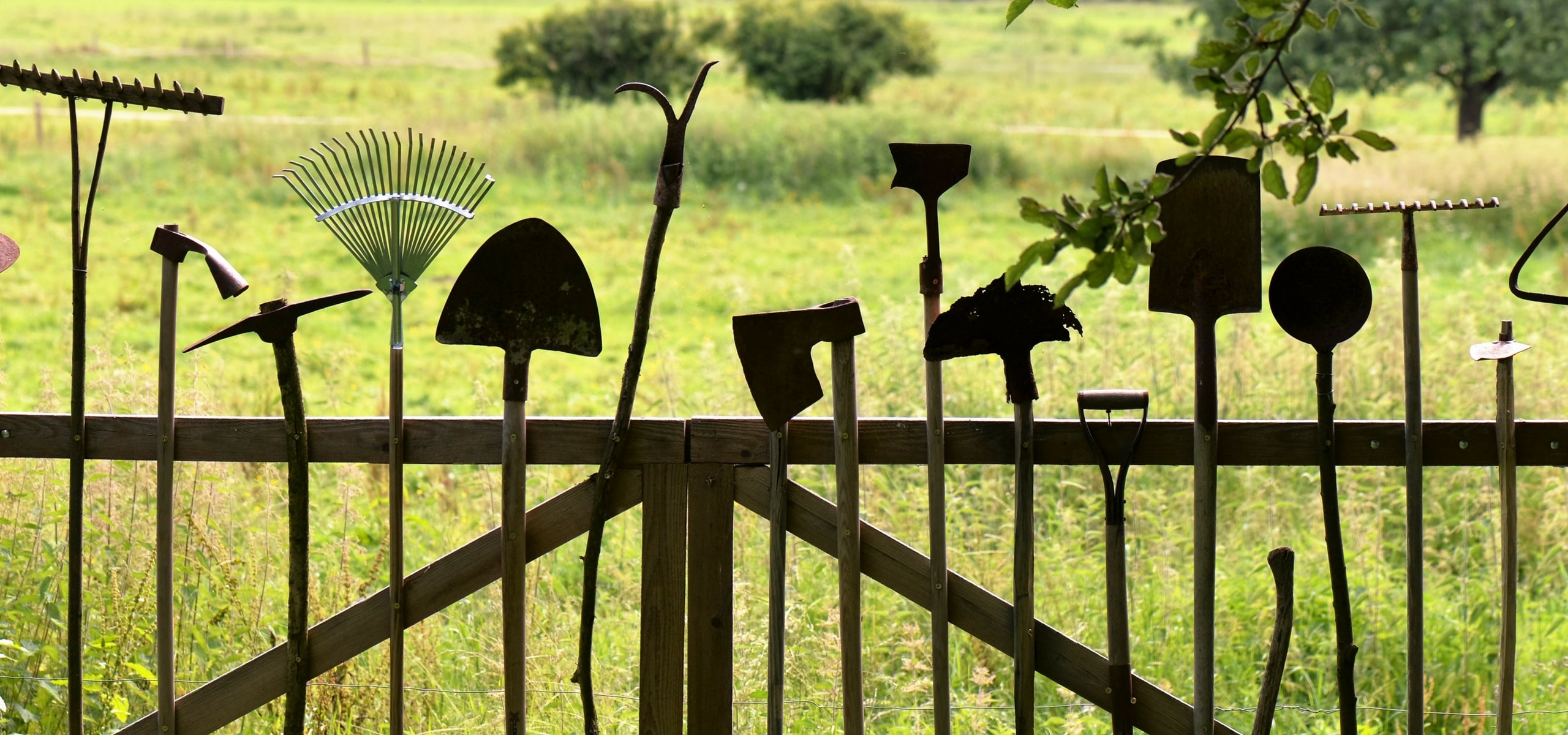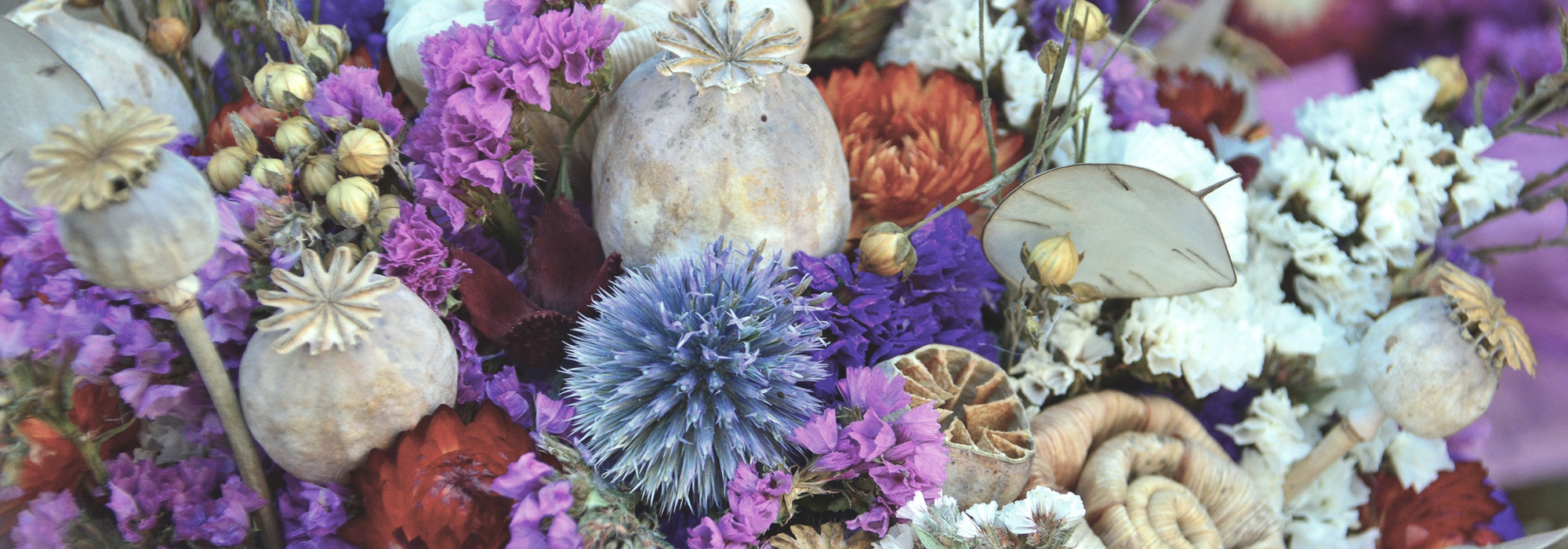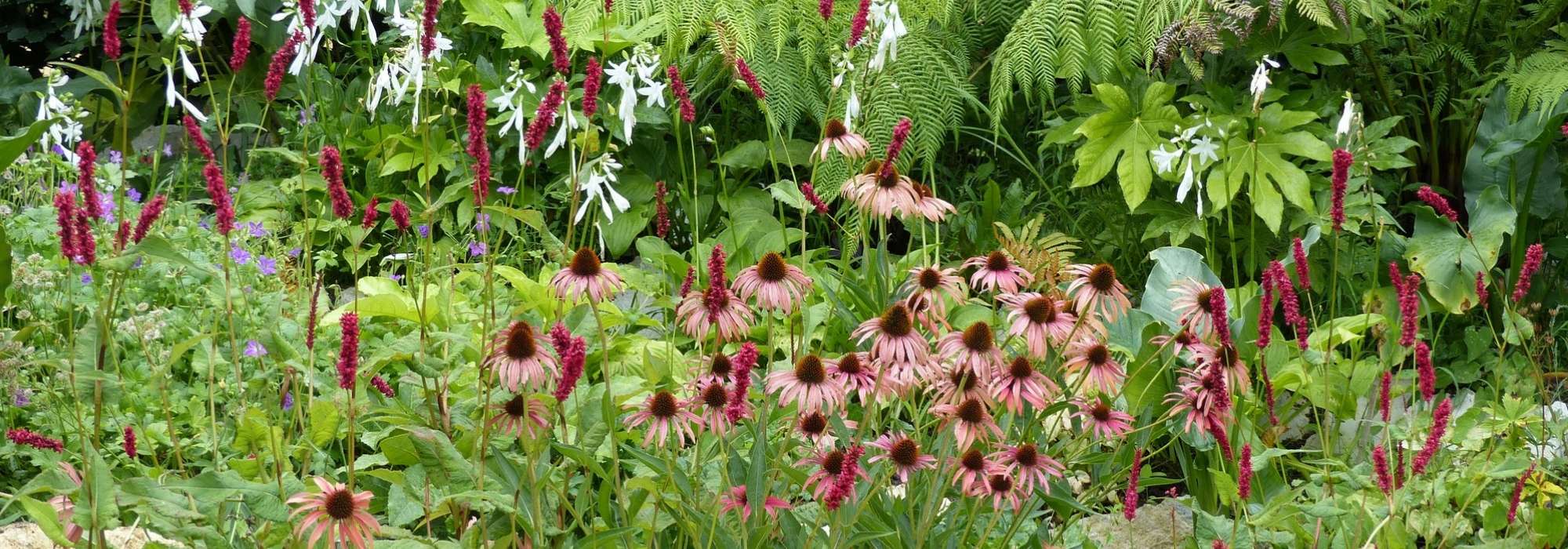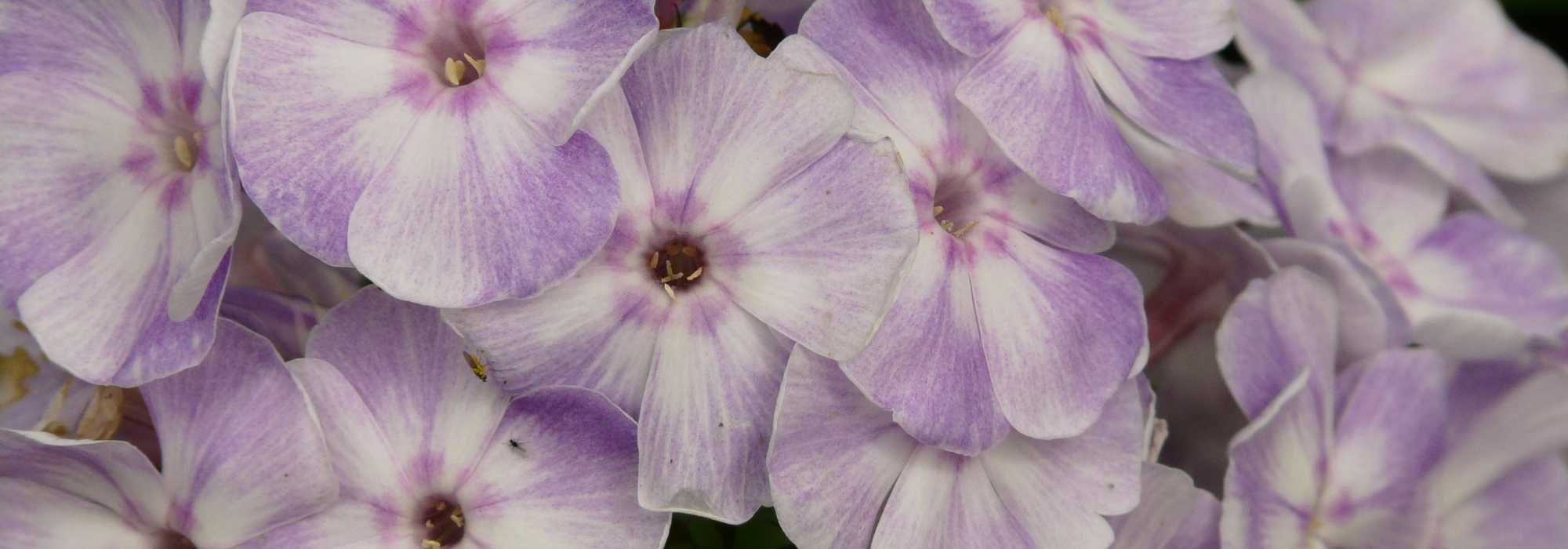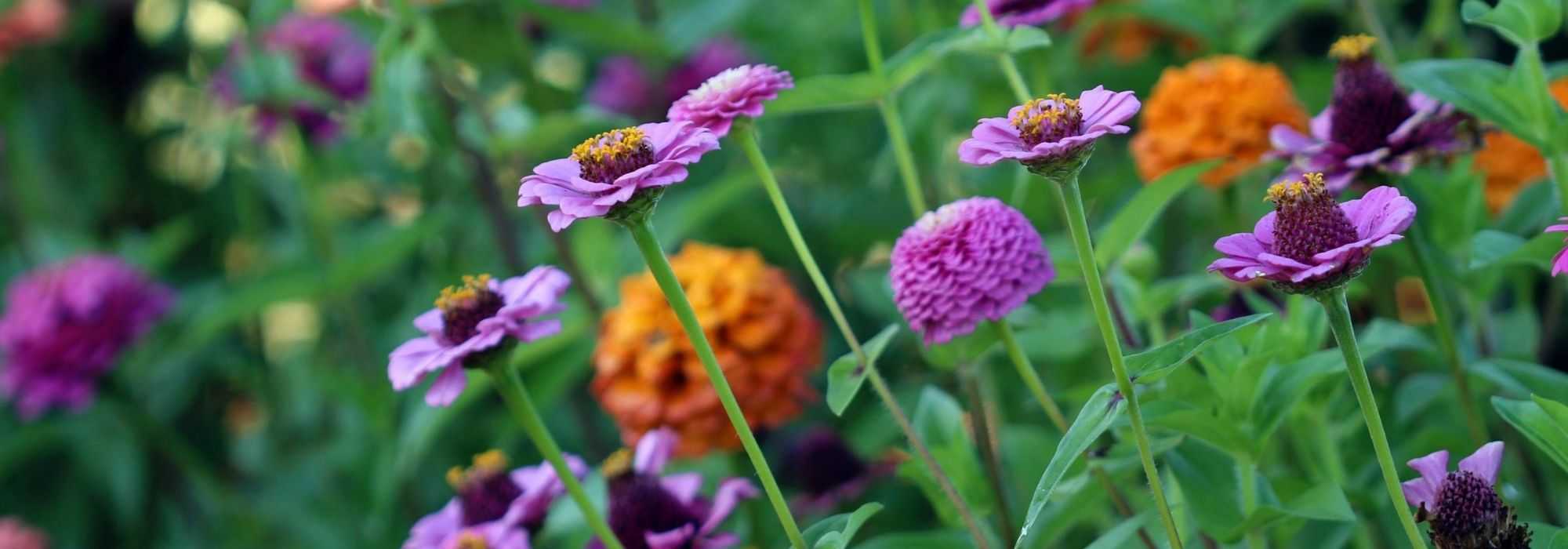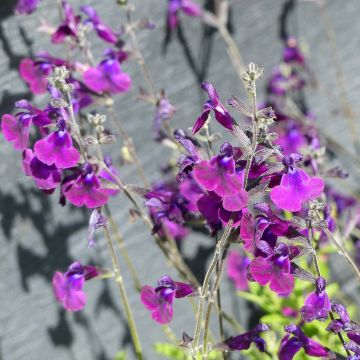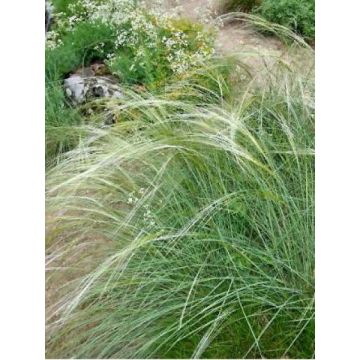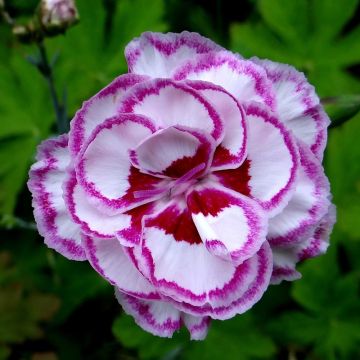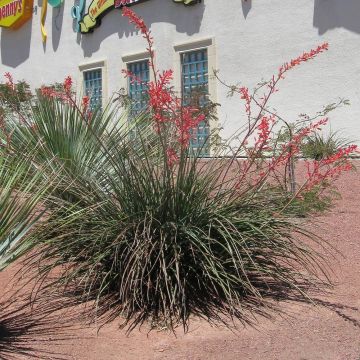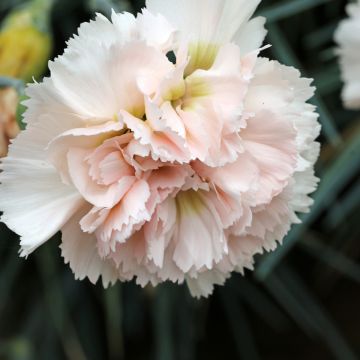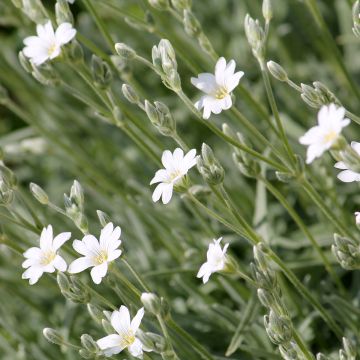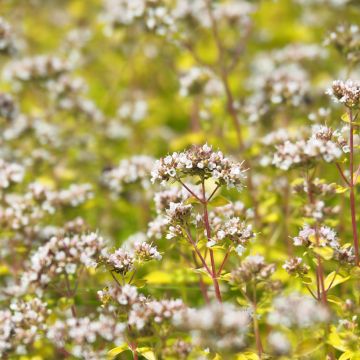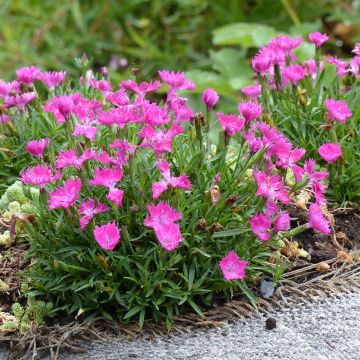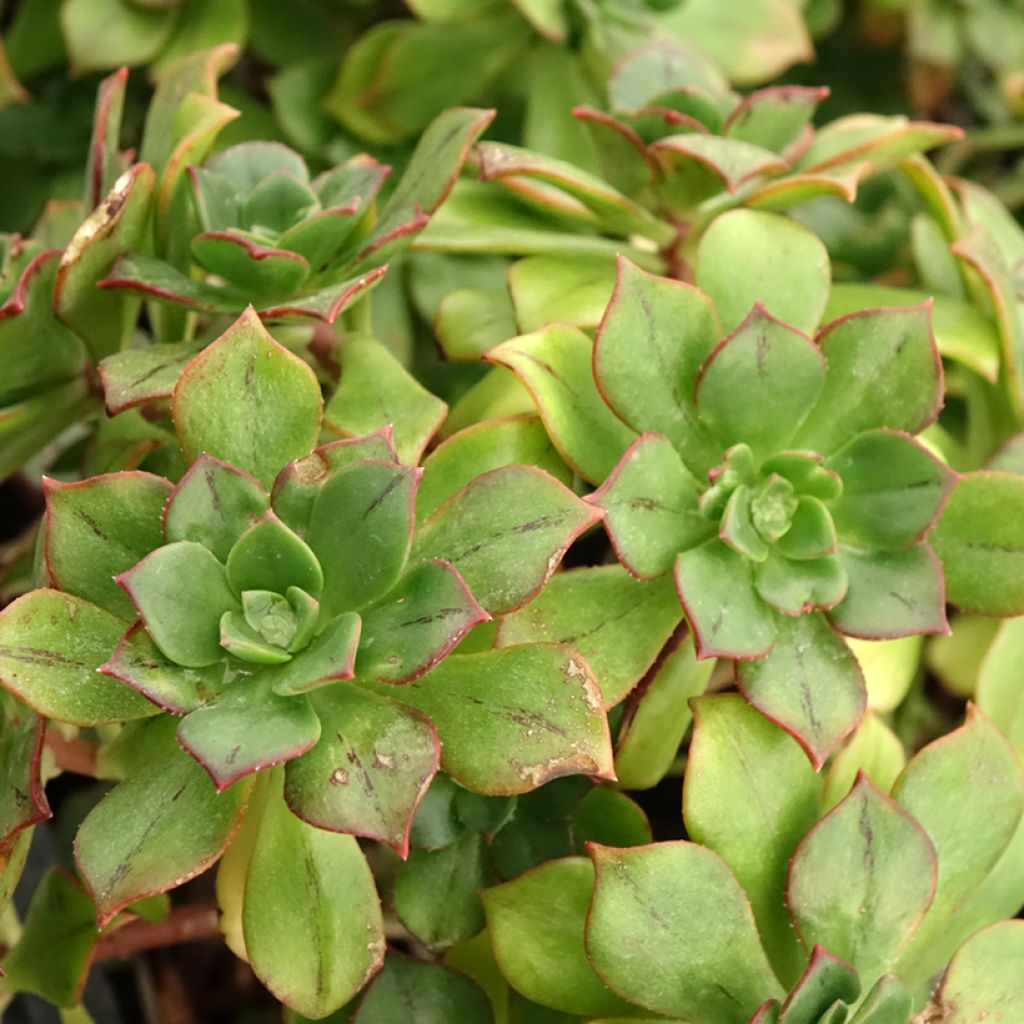

Aeonium Bronze Medal
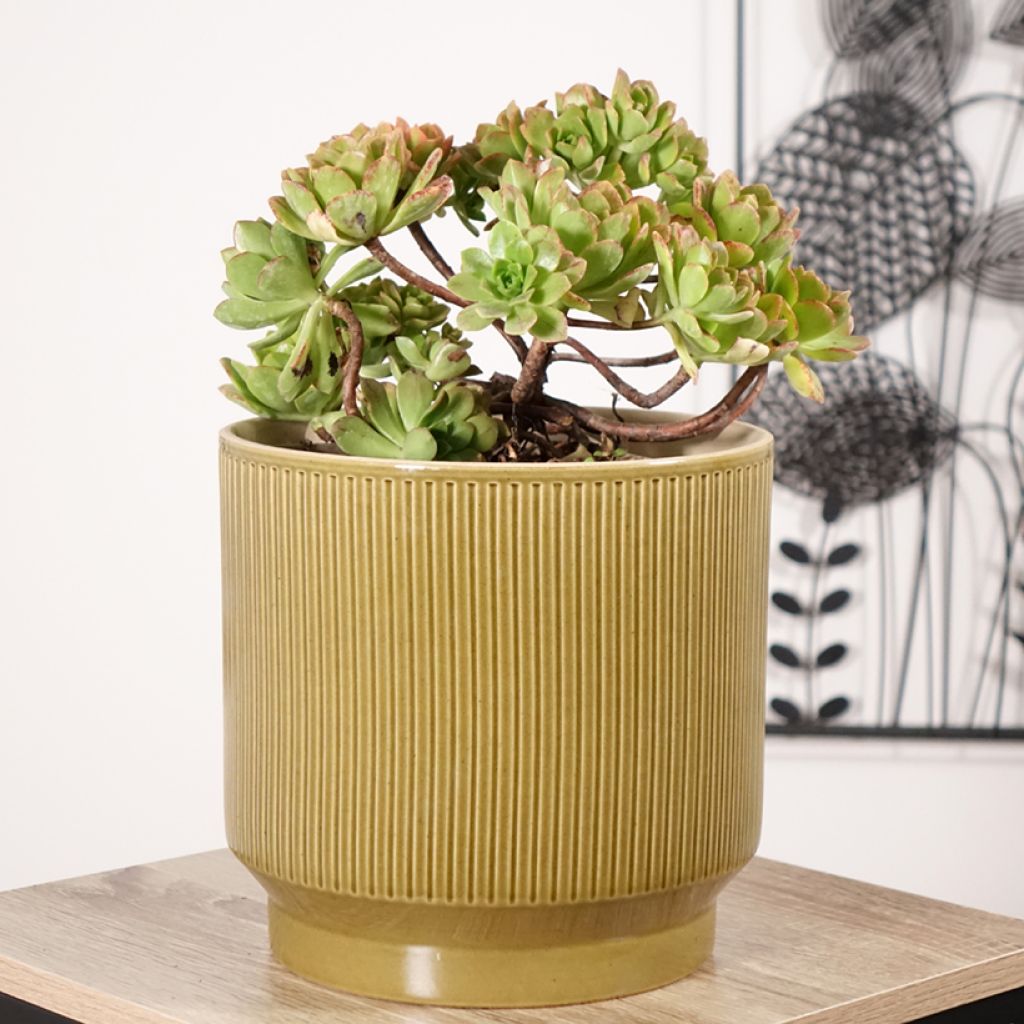

Aeonium Bronze Medal
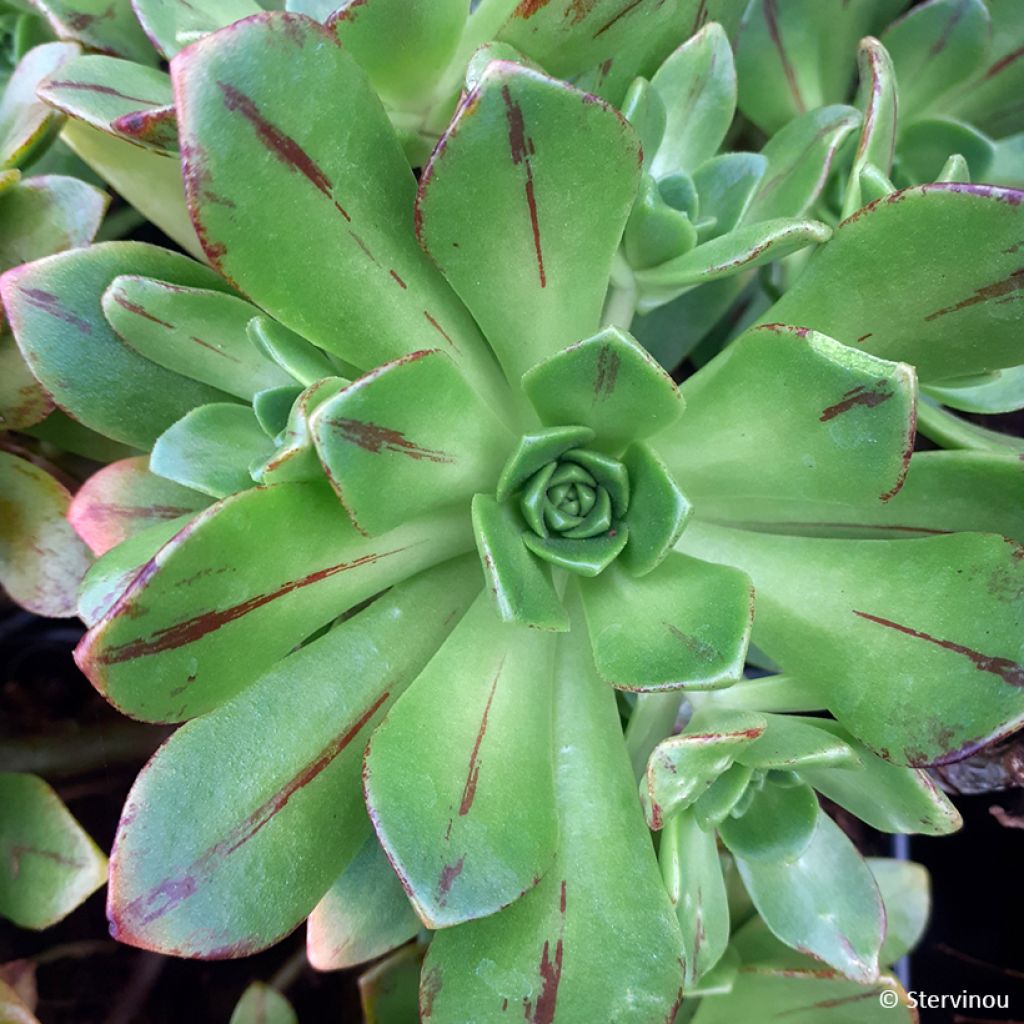

Aeonium Bronze Medal
Aeonium Bronze Medal
Aeonium sedifolium x goochiae Bronze Medal
Tree Aeonium, Tree Houseleek, Irish Rose
Special offer!
Receive a €20 voucher for any order over €90 (excluding delivery costs, credit notes, and plastic-free options)!
1- Add your favorite plants to your cart.
2- Once you have reached €90, confirm your order (you can even choose the delivery date!).
3- As soon as your order is shipped, you will receive an email containing your voucher code, valid for 3 months (90 days).
Your voucher is unique and can only be used once, for any order with a minimum value of €20, excluding delivery costs.
Can be combined with other current offers, non-divisible and non-refundable.
Home or relay delivery (depending on size and destination)
Schedule delivery date,
and select date in basket
This plant carries a 12 months recovery warranty
More information
We guarantee the quality of our plants for a full growing cycle, and will replace at our expense any plant that fails to recover under normal climatic and planting conditions.
Would this plant suit my garden?
Set up your Plantfit profile →
Description
Aeonium 'Bronze Medal' fascinates as much by its sculptural silhouette as by its very original colours. This variety of succulent plant has a slower growth than others but will reward the gardener's patience. Over time, it forms a miniature bush reminiscent of Japanese bonsai trees. The very geometric rosettes of fleshy leaves contribute to its highly ornamental look, further enhanced by its original colours. Green when they first appear, the leaves then turn to a golden bronze in the sun. Easy to grow in a pot, which allows it to be sheltered in winter, this superb plant can reasonably only be planted in the ground in a warm and very mild climate.
Aeoniums are succulent plants of the Crassulaceae family, rich in 30 genera and nearly 1400 species. Most often small, these plants have a metabolism unique in the plant kingdom that allows them to grow in very arid environments. Some grow in hot climates, like the popular Kalanchoe in our interiors, while others tolerate cold well, like Houseleek (Sempervivum). The 45 species of Aeonium are mostly native to the Canary Islands and have low hardiness. Their vegetation, formed of geometric rosettes, is truly characteristic, giving them all a family resemblance and a highly valuable ornamental characteristic.
'Bronze Medal' is a horticultural variety originating from the United States, whose parentage is not definitively defined. However, it is likely to come from a cross-breeding involving Aeonium sedifolium, a compact, long-lived species with small leaves resembling those of Sedum, hence its name. The other parent could be Aeonium goochiae, one of the few shade species, or it could be descended from Aeonium x occidentale, itself a hybrid, no one really knows...
With a slower growth than other varieties, 'Bronze Medal' matures into a sort of miniature tree 40 cm in height, forming a spread-out dome of 60 cm in width. The short, somewhat twisted branches are adorned with very geometric rosettes of leaves, with a diameter ranging approximately from 3 to 6 or 7 cm, which is noticeably less than other varieties. This miniature aspect is particularly decorative and also allows it to be easily grown in a pot to shelter it in winter, as frost can be fatal to it at -4°/-5°C, especially in the presence of humidity. The leaves form a sort of asymmetrical diamond, with the maximum width in the upper third, and rounded angles. Arranged in rosettes of almost perfect geometry, they resemble flowers, with a tight centre that gradually opens outward. Green when they emerge, evolving into a truly superb golden bronze in the sun. There is also a reddish midrib line that creates a pleasant and subtle contrast. The hearts of the rosettes remain green, giving them a two-tone appearance. In winter, as the light decreases, the plant loses its lovely golden colour to return to green, awaiting the following summer.
Mature plants produce a very interesting flowering, in the form of corymbs of small starry flowers. Approximately 2 cm in diameter, the flowers, ranging from light to more intense yellow depending on the exposure, have 9 slender, pointed petals. These bright corollas are additionally adorned with a cluster of erect stamens that give them volume.
With its natural bonsai look and magnificent golden colour, Aeonium 'Bronze Medal' is a top choice for succulent plant lovers. In a climate mild enough to accommodate it in the ground, you can associate it with other botanical beauties like the magnificent Queen Victoria's Agave with impeccable geometry, featuring rather light green leaves edged in white, arranged in a dense rosette. Elsewhere, you can grow your Aeonium in a pot to bring it indoors to a bright frost-free room in winter. You can bury the pot in the ground during the warmer season amidst a bed of exotic-looking plants that can withstand the cold. The famous Yucca rostrata, renowned for its fine, bluish foliage, is a fine example, hardy in many areas. This is also the case with Red Yucca (Hesperaloe parviflora), a perennial that forms a clump of very fine leaves and will reward you in summer with sumptuous coral-red flower spikes. The Zigzag Aloe (Aloe striatula) is also an excellent choice to bring a touch of the exotic with its typical warm climate foliage and its bountiful yellow-orange tinged flowering.
Aeonium Bronze Medal in pictures
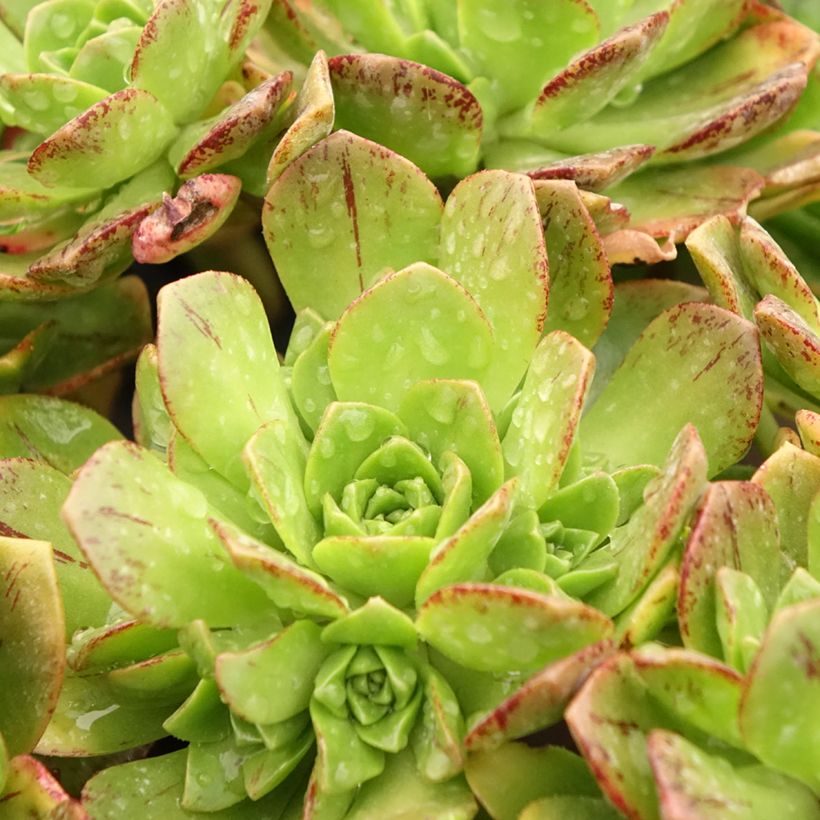

Flowering
Foliage
Plant habit
Botanical data
Aeonium
sedifolium x goochiae
Bronze Medal
Crassulaceae
Tree Aeonium, Tree Houseleek, Irish Rose
Cultivar or hybrid
Planting and care
Aeonium 'Bronze Medal' is resistant to heat and drought and requires light, perfectly drained, sandy, poor, even slightly limestone soil. Plant it in spring, after the last frosts, in the ground, in a coastal, mild, or hot and dry climate. Plant in pots all year round, sheltered from frost of course. It thrives in the sun (or possibly in partial shade further south when it will be less colourful), and likes to have warm roots. Native to the Canary Islands, it is sensitive to frost and can only be planted outdoors in very mild climates, where frost is occasional and not intense. Overwinter this plant in an unheated, but frost-free and bright location. Water very moderately from autumn to spring, and sparingly in summer. Remove faded inflorescences and dead branches.
Planting period
Intended location
Care
Planting & care advice
This item has not been reviewed yet - be the first to leave a review about it.
Similar products
Haven't found what you were looking for?
Hardiness is the lowest winter temperature a plant can endure without suffering serious damage or even dying. However, hardiness is affected by location (a sheltered area, such as a patio), protection (winter cover) and soil type (hardiness is improved by well-drained soil).

Photo Sharing Terms & Conditions
In order to encourage gardeners to interact and share their experiences, Promesse de fleurs offers various media enabling content to be uploaded onto its Site - in particular via the ‘Photo sharing’ module.
The User agrees to refrain from:
- Posting any content that is illegal, prejudicial, insulting, racist, inciteful to hatred, revisionist, contrary to public decency, that infringes on privacy or on the privacy rights of third parties, in particular the publicity rights of persons and goods, intellectual property rights, or the right to privacy.
- Submitting content on behalf of a third party;
- Impersonate the identity of a third party and/or publish any personal information about a third party;
In general, the User undertakes to refrain from any unethical behaviour.
All Content (in particular text, comments, files, images, photos, videos, creative works, etc.), which may be subject to property or intellectual property rights, image or other private rights, shall remain the property of the User, subject to the limited rights granted by the terms of the licence granted by Promesse de fleurs as stated below. Users are at liberty to publish or not to publish such Content on the Site, notably via the ‘Photo Sharing’ facility, and accept that this Content shall be made public and freely accessible, notably on the Internet.
Users further acknowledge, undertake to have ,and guarantee that they hold all necessary rights and permissions to publish such material on the Site, in particular with regard to the legislation in force pertaining to any privacy, property, intellectual property, image, or contractual rights, or rights of any other nature. By publishing such Content on the Site, Users acknowledge accepting full liability as publishers of the Content within the meaning of the law, and grant Promesse de fleurs, free of charge, an inclusive, worldwide licence for the said Content for the entire duration of its publication, including all reproduction, representation, up/downloading, displaying, performing, transmission, and storage rights.
Users also grant permission for their name to be linked to the Content and accept that this link may not always be made available.
By engaging in posting material, Users consent to their Content becoming automatically accessible on the Internet, in particular on other sites and/or blogs and/or web pages of the Promesse de fleurs site, including in particular social pages and the Promesse de fleurs catalogue.
Users may secure the removal of entrusted content free of charge by issuing a simple request via our contact form.
The flowering period indicated on our website applies to countries and regions located in USDA zone 8 (France, the United Kingdom, Ireland, the Netherlands, etc.)
It will vary according to where you live:
- In zones 9 to 10 (Italy, Spain, Greece, etc.), flowering will occur about 2 to 4 weeks earlier.
- In zones 6 to 7 (Germany, Poland, Slovenia, and lower mountainous regions), flowering will be delayed by 2 to 3 weeks.
- In zone 5 (Central Europe, Scandinavia), blooming will be delayed by 3 to 5 weeks.
In temperate climates, pruning of spring-flowering shrubs (forsythia, spireas, etc.) should be done just after flowering.
Pruning of summer-flowering shrubs (Indian Lilac, Perovskia, etc.) can be done in winter or spring.
In cold regions as well as with frost-sensitive plants, avoid pruning too early when severe frosts may still occur.
The planting period indicated on our website applies to countries and regions located in USDA zone 8 (France, United Kingdom, Ireland, Netherlands).
It will vary according to where you live:
- In Mediterranean zones (Marseille, Madrid, Milan, etc.), autumn and winter are the best planting periods.
- In continental zones (Strasbourg, Munich, Vienna, etc.), delay planting by 2 to 3 weeks in spring and bring it forward by 2 to 4 weeks in autumn.
- In mountainous regions (the Alps, Pyrenees, Carpathians, etc.), it is best to plant in late spring (May-June) or late summer (August-September).
The harvesting period indicated on our website applies to countries and regions in USDA zone 8 (France, England, Ireland, the Netherlands).
In colder areas (Scandinavia, Poland, Austria...) fruit and vegetable harvests are likely to be delayed by 3-4 weeks.
In warmer areas (Italy, Spain, Greece, etc.), harvesting will probably take place earlier, depending on weather conditions.
The sowing periods indicated on our website apply to countries and regions within USDA Zone 8 (France, UK, Ireland, Netherlands).
In colder areas (Scandinavia, Poland, Austria...), delay any outdoor sowing by 3-4 weeks, or sow under glass.
In warmer climes (Italy, Spain, Greece, etc.), bring outdoor sowing forward by a few weeks.






























